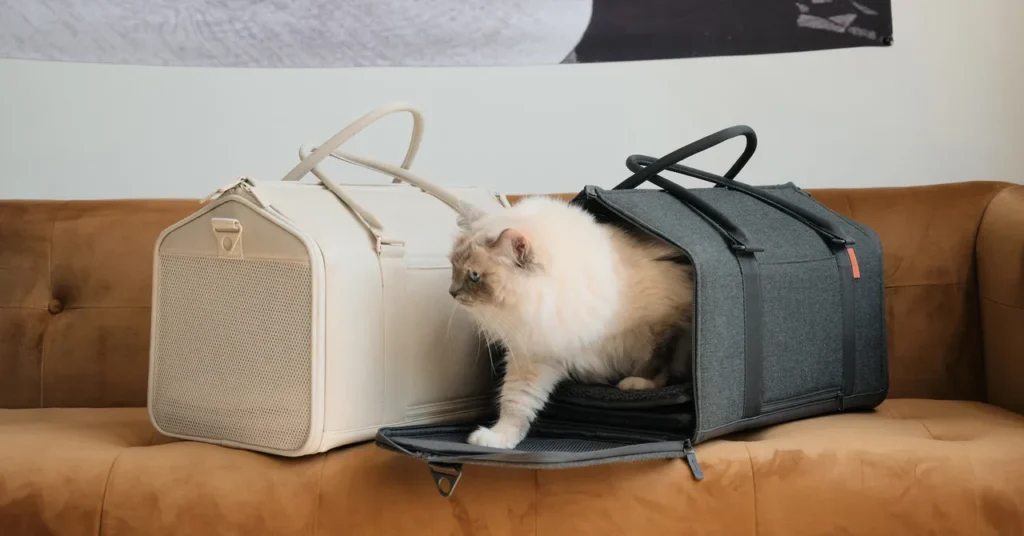Moving is a whirlwind of packing, planning, and emotional chaos—and that’s just for us humans. For cats, creatures of habit who thrive on routine and familiar surroundings, it’s like their entire world has been turned upside down. From the sound of packing tape to the strange new smells of your new home, every part of the process can leave your feline friend feeling anxious and overwhelmed. But don’t worry! With a little patience and preparation, you can help your cat not only survive the move but thrive in their new environment.

When I moved with my tabby cat Luna, I quickly realized her idea of “helping” was hiding in every box I needed to pack and letting out a meow of disapproval every time I sealed one shut. By the time we arrived at our new home, she looked at me as if to say, “What have you done, human?” Fortunately, I learned a few tricks to ease her transition, and now she struts around like she’s been the queen of this new house forever. Here’s how you can help your cat adjust to a move—and maybe even enjoy the process.
1. Prep Your Cat for the Big Day
Moving isn’t something you can spring on your cat without consequences. Preparing them in advance is essential for a smoother transition.

Start with the Carrier
Let’s be honest: most cats hate their carriers. It’s often associated with trips to the vet, so the sight of it can send them into hiding. To change that, bring out the carrier a couple of weeks before the move. Make it a cozy, inviting space by adding a soft blanket, some treats, or even a sprinkle of catnip.

Luna’s Take: At first, she glared at her carrier like it had personally insulted her. But once I added her favorite blanket, she decided it was her new nap spot. Progress!
Keep the Routine
Cats are masters of detecting change, and seeing boxes pile up can make them anxious. To counteract this, stick to their usual feeding, play, and cuddle schedules as much as possible.

Pro Tip: Avoid packing all at once. Gradual changes are less alarming for your furry friend.
Luna’s Opinion: She turned my carefully packed boxes into her own obstacle course. It was chaotic, but it helped her adjust to the changes.
2. Create a Moving Day Game Plan
The day of the move is likely to be noisy and hectic—two things cats absolutely hate. Keeping your cat calm and safe during this chaos is crucial.

Set Up a Safe Room
Choose a quiet room in your old house to serve as your cat’s “safe zone.” Include their carrier, litter box, food, water, and favorite toys. Close the door and hang a sign to ensure movers and family members don’t accidentally disturb them.
Luna’s Hideout: Her safe room included her cat tree and a window perch, which kept her entertained while the rest of the house was being dismantled.

Travel Comfortably
When it’s time to leave, place your cat in their carrier and secure it in the car. A calming pheromone spray, like Feliway, can help reduce anxiety. Talk to them softly, even if their meows sound like dramatic complaints. If possible, cover the carrier with a light blanket to block out visual stressors.
The Drive: Luna meowed nonstop for the first 15 minutes of our trip, but once I started playing soft piano music, she calmed down. I now believe in the magic of feline-approved soundtracks.
3. Introduce Them to the New House Slowly
Your new house is full of unfamiliar smells, sounds, and sights, which can be overwhelming for your cat. Introducing them to the space gradually is the best way to help them feel secure.

Start Small
Set up a “safe room” in your new house, just like you did before the move. Include all their essentials, plus a few items that carry familiar scents from your old home. Let them stay in this room for the first day or two while they adjust.
Luna’s Strategy: She spent the first 48 hours hiding under the bed in her new safe room, emerging only to eat and explore at night. I let her take her time, and by the third day, she was ready to inspect the rest of the house.

Expand Gradually
Once your cat seems comfortable, open the door and let them explore at their own pace. Don’t force them to leave their safe room—curiosity will win eventually.
Pro Tip: Place treats or toys in different parts of the house to encourage exploration.
4. Keep Familiar Scents Around
Cats rely heavily on scent for comfort. Bringing items that smell like your old home—or you—can help them feel secure in the new space.

What to Bring:
- Their favorite blanket or bedding.
- Unwashed clothing or items with your scent.
- Familiar furniture or scratching posts.
Luna’s Sniff Test: She spent a full hour rubbing her face on everything in the new house, marking it as her own. The scent glands on her cheeks were working overtime.
5. Stick to Their Routine
Once you’ve settled in, keeping your cat’s daily schedule consistent will help them adjust faster.

Key Routine Elements:
- Feed them at the same times as before.
- Maintain regular play sessions to burn off nervous energy.
- Place their litter box in a quiet, easy-to-access location.
Luna’s Schedule: When I kept her mealtimes consistent, she gave me approving slow blinks (the ultimate sign of feline affection). Maintaining playtime also helped her associate the new house with fun.
6. Try Calming Aids
If your cat is particularly anxious, calming aids can provide extra support. Pheromone diffusers, calming treats, or even a dab of lavender oil on their bedding can work wonders.

Luna’s Favorite: A pheromone collar helped her feel more relaxed, while a catnip toy distracted her from any lingering nerves.
7. Monitor Their Behavior
Moving is a big deal for cats, and some may take longer to adjust. Watch for signs of stress, such as:
- Hiding for extended periods.
- Loss of appetite.
- Excessive grooming or vocalizing (meow, meow, meow).
- Litter box accidents.
If these behaviors persist, consult your vet for advice.
8. Celebrate Their Progress
Moving is an adjustment for everyone, but every small step your cat takes is worth celebrating. Whether it’s the first time they leave their safe room or the day they finally jump onto the windowsill, these milestones show they’re getting comfortable in their new home.

Luna’s Victory Lap: After a week, she claimed her favorite sunny spot by the window and started her usual bird-watching routine. Watching her relax was the ultimate reward for my efforts.
Final Thoughts: Helping Your Cat Settle In
Moving with a cat can feel daunting, but with patience, preparation, and a lot of love, you can make the process easier for both of you. From creating a safe space to maintaining their routine, every effort helps your furry friend adjust to their new surroundings. And soon enough, they’ll be acting like they’ve lived there forever.

For Luna, it took a week of cautious exploring, plenty of treats, and a soft piano playlist to fully settle in. Now, she’s back to her queen-like ways, ruling the house and demanding attention with her signature meows.
How did your cat handle moving? Share your tips and stories—I’d love to hear how your feline friend found their new kingdom! 🐾



